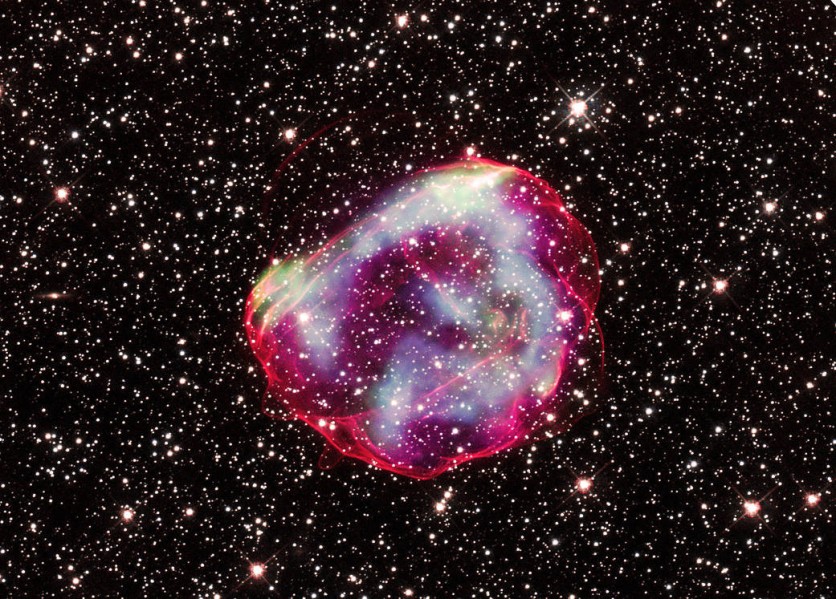Even though scientists have observed the remains of numerous stars that have exploded in the Milky Way and adjacent galaxies, it is frequently challenging to pinpoint the exact timing of the star's death.
But now, a team of astronomers have used NASA telescopes to examine the stunning remnants of a supernova in a nearby galaxy and have discovered enough information to recover what their original form looked like.
Astronomers utilized data from Chandra, Hubble, and Spitzer, a NASA space telescope that is no longer in use, to estimate how long ago the star in SNR 0519 exploded and to learn more about the environment of the supernova.

Stellar Death
The relic of a white dwarf star's outburst is known as SNR 0519-69.0 (abbreviated SNR 0519). The star was killed in a thermonuclear explosion after reaching a critical mass, possibly by absorbing material from a companion star or merging with another white dwarf, according to NASA.
This type of supernova, known as a Type Ia, is used by scientists for a variety of research projects, including studies of thermonuclear explosions and measurements of the distances between galaxies over billions of light-years.
SNR 0519 is a tiny galaxy 160,000 light-years away from Earth that is part of the Large Magellanic Cloud. This composite image combines optical and X-ray data from NASA's Hubble Space Telescope and Chandra X-ray Observatory.
Low, medium, and high energy X-rays from SNR 0519 are displayed in green, blue, and purple, with some of these hues overlapping to look white. Optical data displays the stars surrounding the remnant in white and the remnant's perimeter in red.
Read also : NASA's Hubble Space Telescope Captures a Dazzling Starscape That Will Leave You Wonderstruck
Rewinding the Stellar Evolution Movie
This information gives researchers the possibility to "rewind" the stellar evolution before it violently exploded.
To determine the material's velocity in the blast wave from the explosion, which ranges from around 3.8 million to 5.5 million miles (9 million kilometers an hour), the researchers examined Hubble photos from 2010, 2011, and 2020.
The scientists concluded that light from the explosion would have reached Earth around 670 years ago, or at the height of the Ming dynasty in China and the Hundred Years' War between England and France, if the speed was toward the higher end of those projected speeds.
NASA noted that although it's possible that the material has slowed down after the first explosion, it happened more recently than 670 years ago.
There are hints that this is the case in the Chandra and Spitzer data. Researchers discovered that the fastest-moving material is not connected with any X-ray emission, whereas the slowest-moving material is situated in the brightest places of the remnant's X-rays.
These findings suggest that a portion of the blast wave may have collided with the dense gas surrounding the remnant, slowing it down as it moved. NASA noted that astronomers might use additional Hubble measurements to estimate the precise moment that the star met its demise.
Related Article : NASA's Hubble Space Telescope Captures 'Orion Nebula's Dreamy Cloudscape' With Over 500 Exposures!
This article is owned by Tech Times
Written by Joaquin Victor Tacla
ⓒ 2025 TECHTIMES.com All rights reserved. Do not reproduce without permission.




